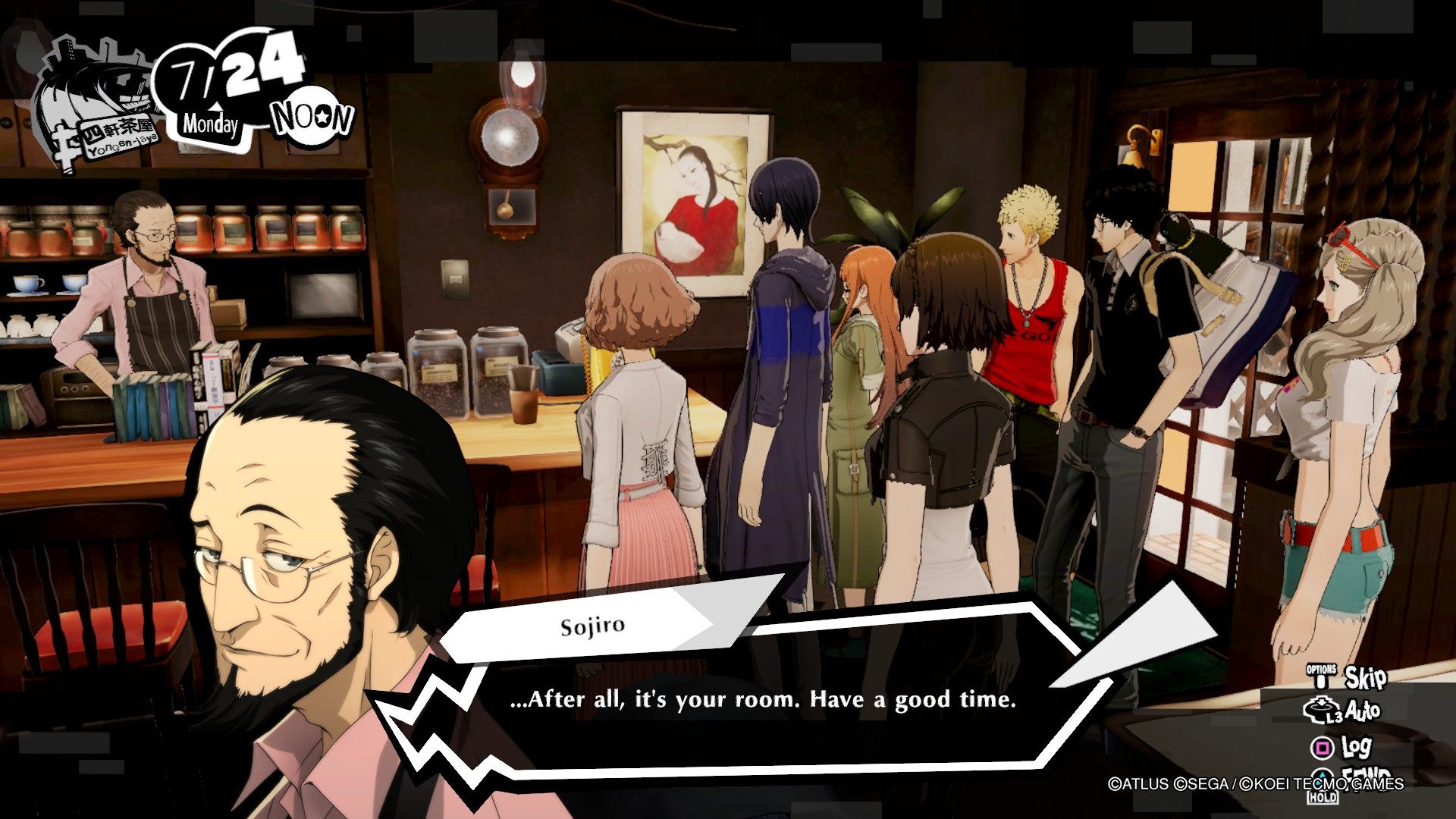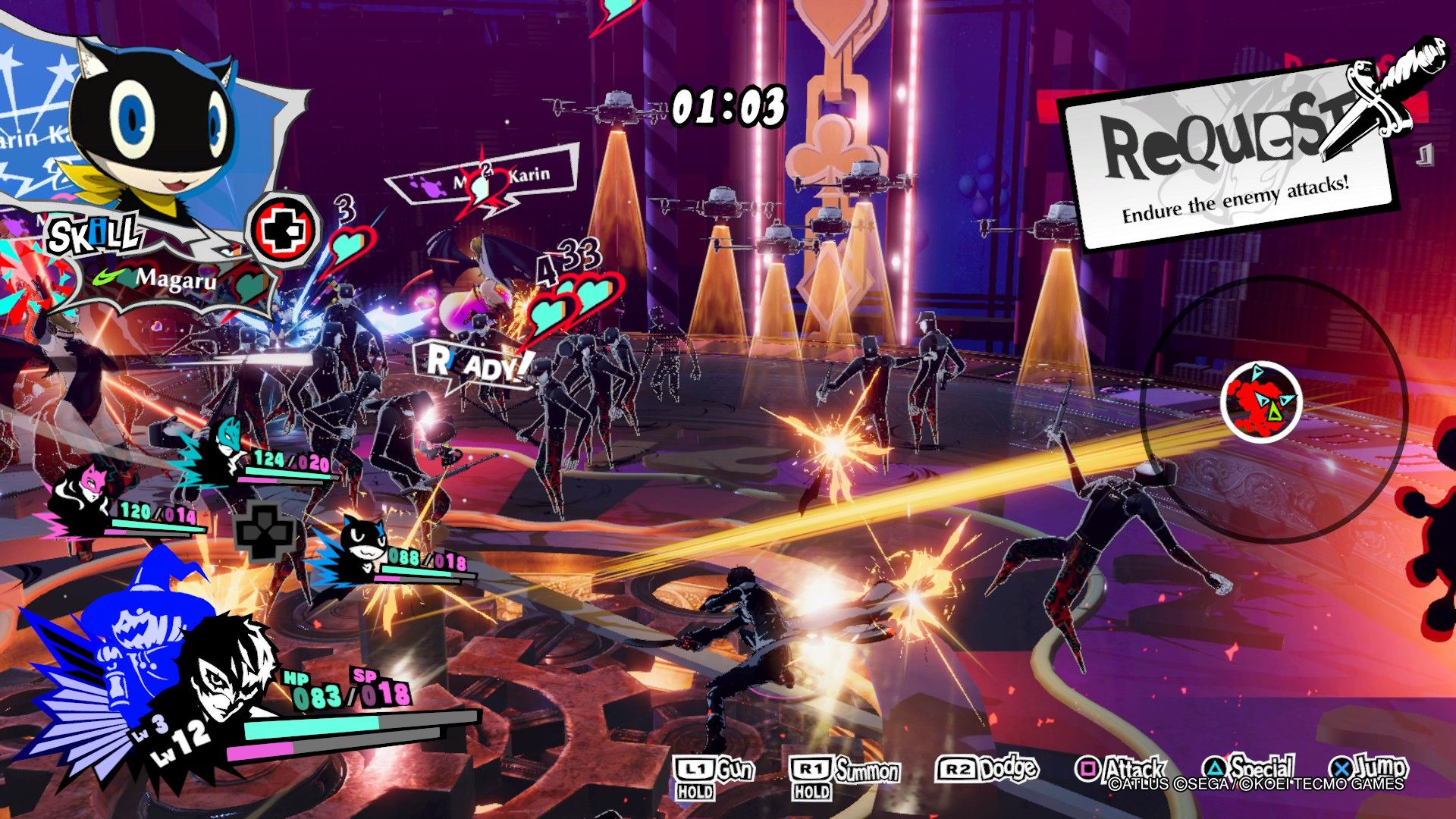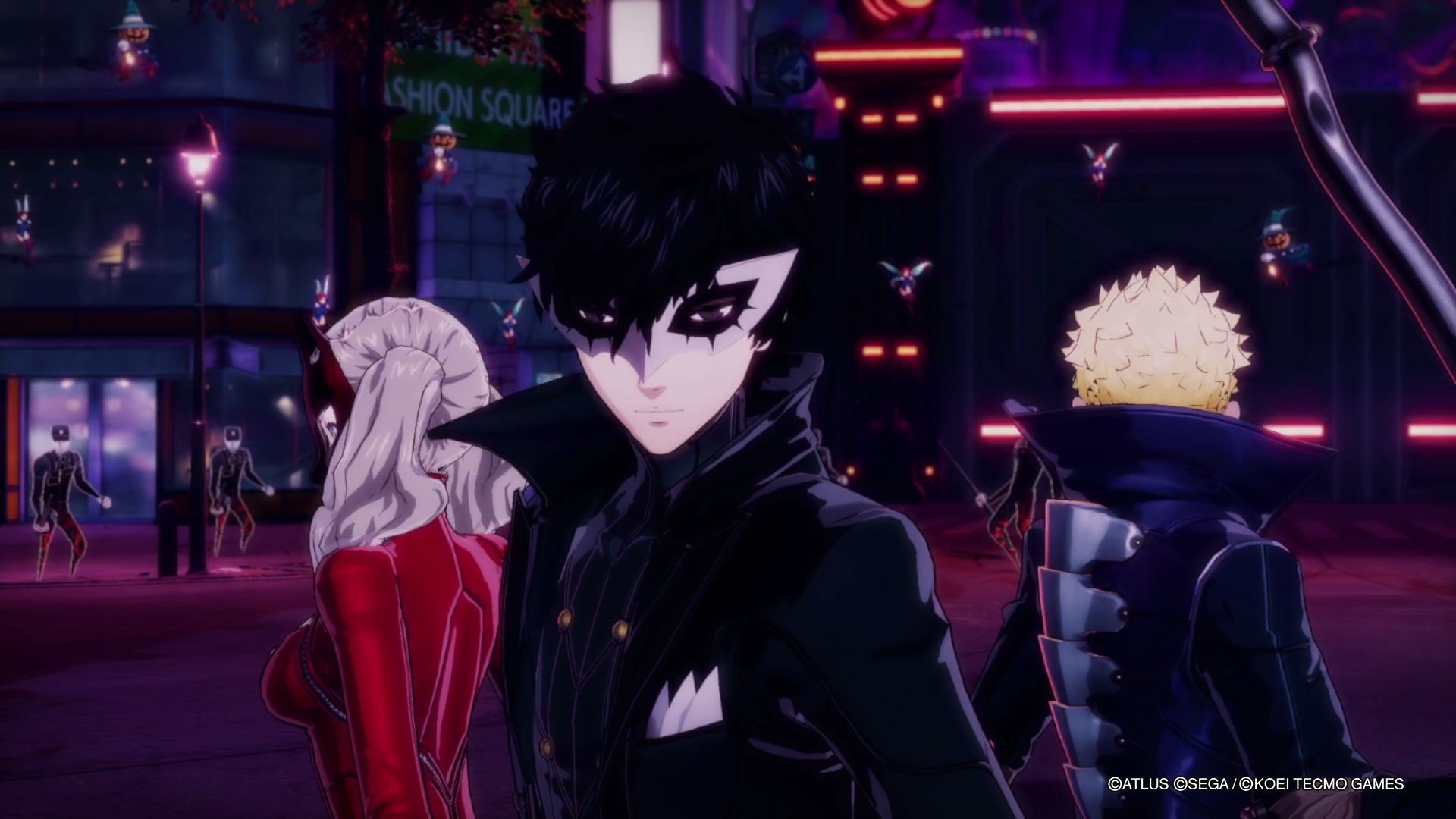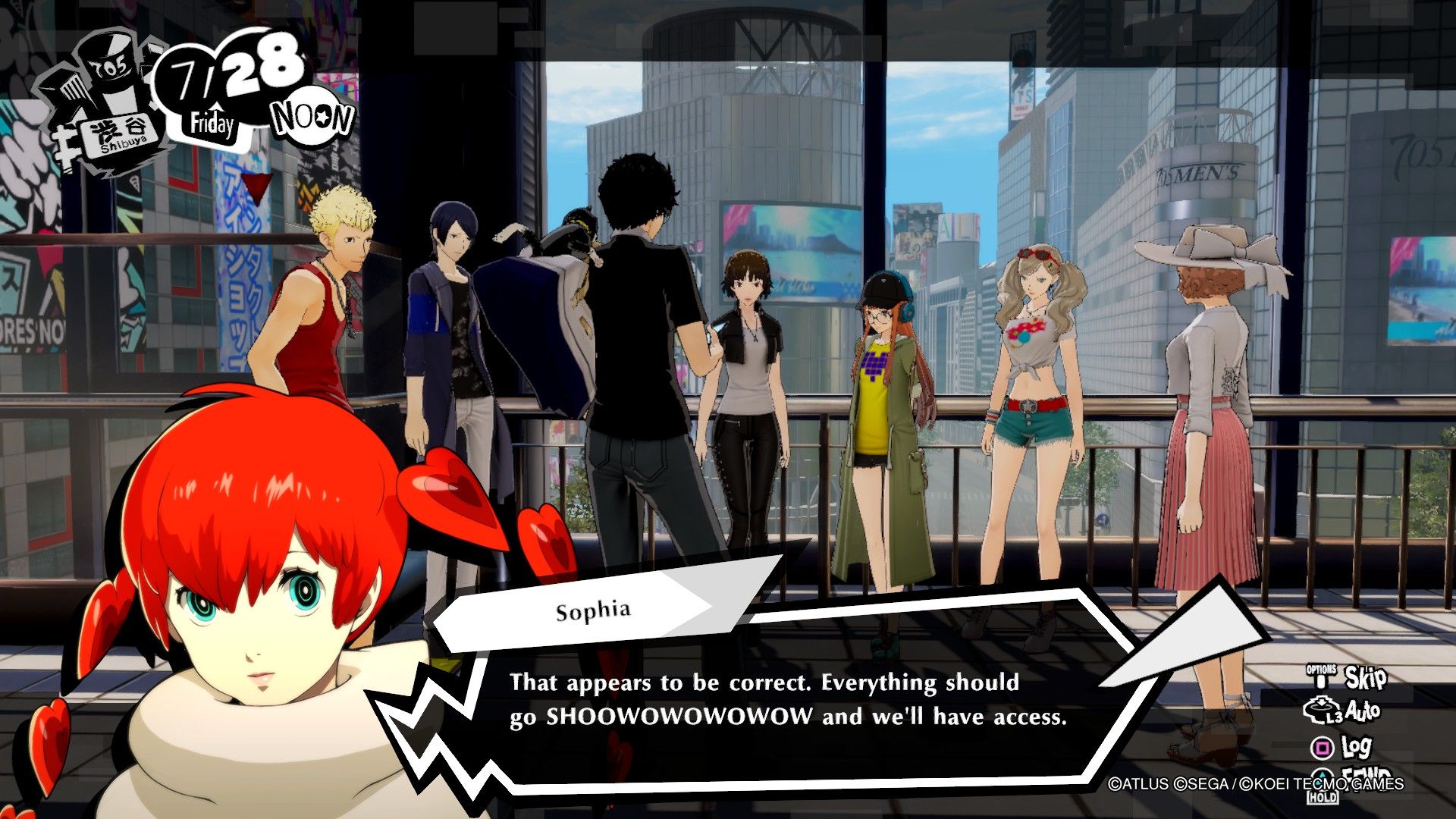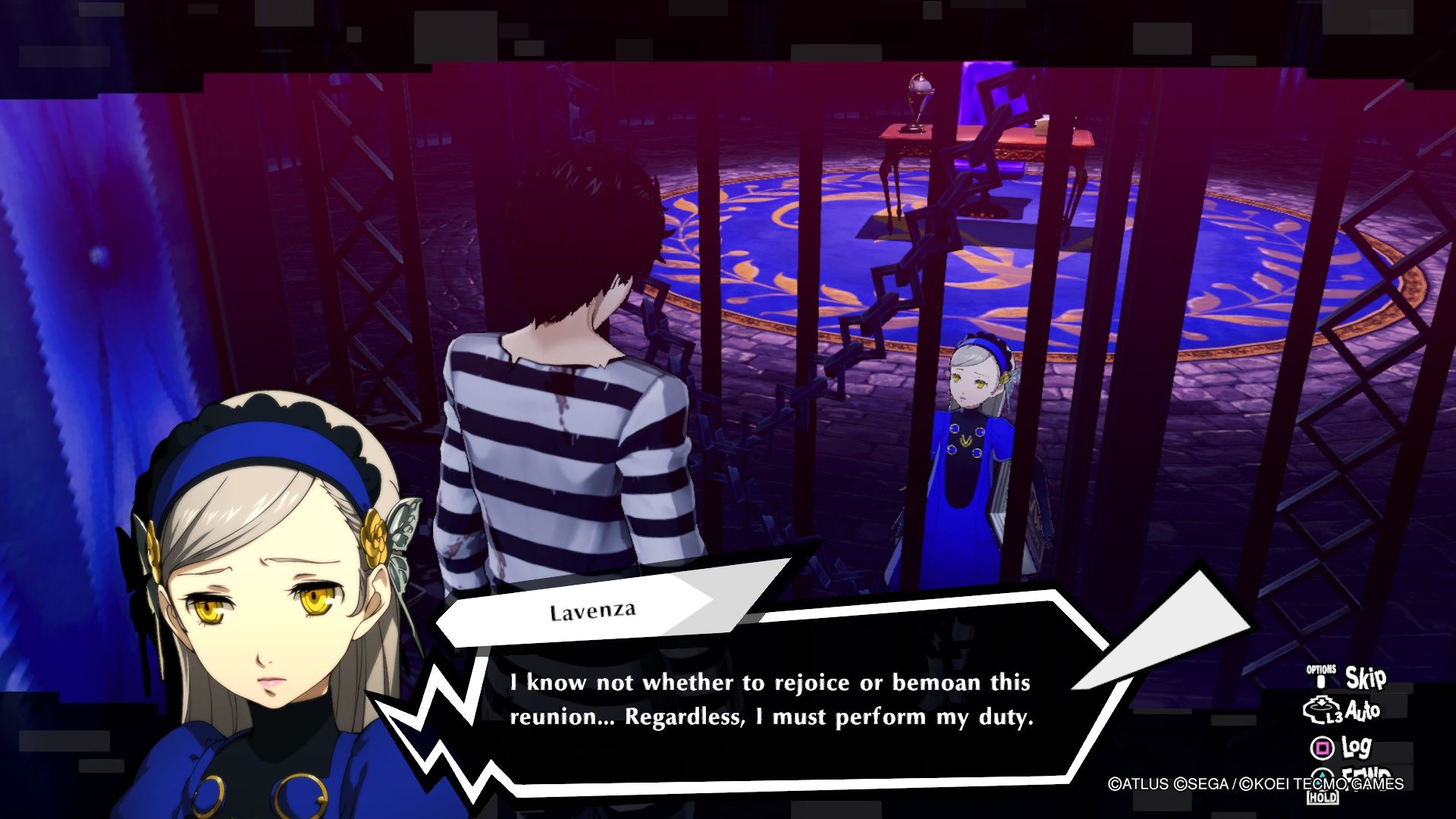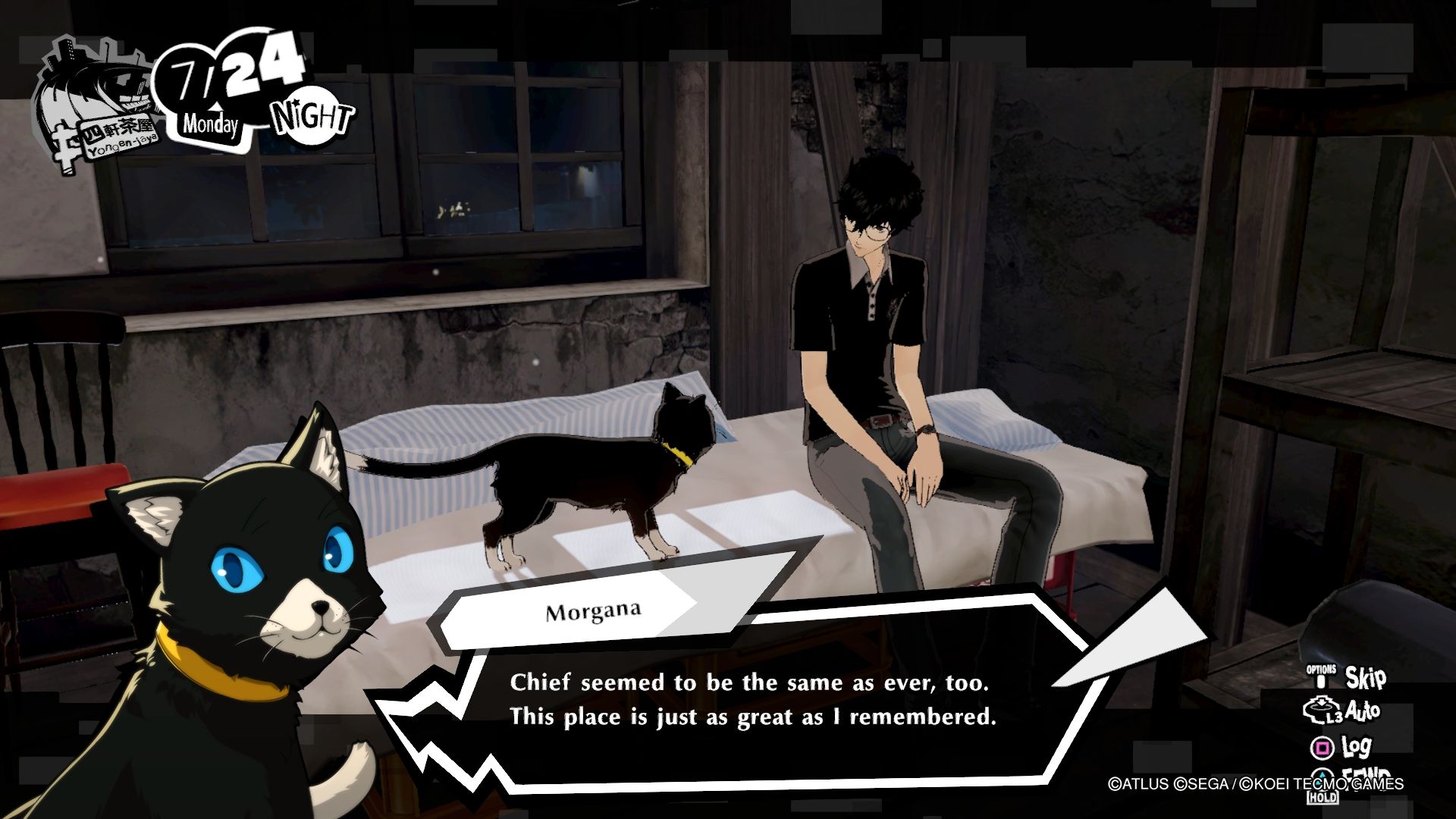Yesterday morning, I had to send my boss a fairly awkward message on account of being late to work for the first time since I started in September. “Hey mate,” I said. “Sorry I’m 40 minutes late, I was playing Persona 5 Strikers last night and got a bit carried away.” I don’t feel comfortable disclosing the ungodly hour I accidentally played until, but suffice it to say, I only realized my mistake long after the birds started chirping.
I’ve spent a lot of time with the Phantom Thieves over the last ten months. I blitzed through Persona 5 Royal when it launched last March, and booted up a second playthrough just a couple of months afterwards. There’s something truly special about this world that never fails to mesmerize me. The layout of Tokyo is geographically sound, but is somehow made even more enchanting by its distinctly stylish aesthetic. The characters all feel palpable, their personalities bouncing off of one another as you flit between conversations about everything from flunking exams to literally attacking and dethroning God. Don’t even get me started on how good the music is. I’ll be here all day.
Persona 5 Strikers takes all of what I’ve mentioned above and compartmentalizes it into a neat little package – one that is far denser than it is large. Strikers is almost brazen in its riffing off of what came before. From set dressing to constant inside jokes, this is a game that recognizes its roots and demonstrably acknowledges them at every turn. The Sayuri hangs proudly in Leblanc, a testament to Yusuke Kitagawa’s strife in retaining his mother’s artistic integrity. When the Phantom Thieves finish their cheeky coffee and curry combo, Sojiro suggests they head upstairs so he can open shop. “After all, it’s your room,” he says. “Have a good time.”
I’m not going to lie – that one was a real emotional gut-punch, and it was accentuated even further by the fact the game makes a conscious decision to hang back a minute and let Sojiro share a quick little quip to himself. “Great,” he mutters. “Just when I was enjoying the peace and quiet.” That’s our Sojiro.
I found myself beaming at the screen every single time anything like this happened. I got unreasonably excited about the change of day being marked by stabbing a knife into a calendar, despite the fact that this was obviously going to be the case. When Talk – the upbeat tune that plays during offhand conversations – played, I lost my shit. Even the saving audio – “I should write something” – managed to elicit a response from me. If you’re as into Persona 5 as I am, I can assure you that it’s all there. As in, literally all of it.
I’d like to clarify that I’m not saying Strikers rides on Joker’s Persona 5 coattails – it’s just evidently aware of what made that game so resonant and hard-hitting. It’s a sequel that feels like a natural addendum to its predecessor in every conceivable way, except for the fact that it’s a new story, told with new pizazz. This newness is mostly attributable to the formulaic changes that Strikers makes, the most prominent of which is the switch from turn-based combat to musou.
Except it’s not really musou, at least strictly speaking. While the Dynasty Warriors-esque mobs are here in force, the complexity of combat is almost daunting at the beginning. It feels much more like the combat you’d find in a real-time action game than something that is distinctly musou – if Hyrule Warriors: Age of Calamity tastefully iterates on the formula, Persona 5 Strikers drops an active reagent into the test tube and watches it explode.
Fortunately, it’s all very intuitive. Even with the vast variety of systems and options available in Strikers, combat methodology can be quickly and easily mastered. I was initially skeptical as to how the game could accommodate Joker’s wild card, meaning his unique ability to hold several personas within him at any given time. Its integration of swapping between multiple personas, triggering elemental affinities, switching characters to compound damage output, and moment-to-moment musou-esque chaos is nothing short of spectacular. Again, it might seem as if there’s a lot going on at the start, but it clicks after the first couple of fights. By the time I was an hour or two in, I’d inadvertently forgotten that these characters used to be attached to a turn-based system – that’s how natural the refurbished combat feels.
I can’t go into too much detail here given that this preview only covers the events that transpire up until the end of the first Jail – Palaces are called Jails now, by the way – but I can say that I’m also very confident about Strikers’ narrative potential. The story is immediately arresting and feels coherent right from the first few beats. It genuinely seems like a natural progression from the end of Persona 5, as opposed to some forced content dump designed to capitalize on the success of a popular game.
The main story isn’t even what captivates me most, though. At the beginning of Strikers, I was disappointed to discover that there were no social links with confidants. To make matters worse, I went to Takemi’s clinic in Yongen-Jaya and it was closed, as was Iwai’s airsoft shop off Central Street. I have no idea about whether or not these characters – essentially the non-Phantom Thief confidants – make an appearance later on. However, I can say that Joker’s more insular circle proves that it has transcended social links, which feels paradoxically refreshing given how much I initially missed them.
Strikers assumes that you’ve already maxed out your social links with each individual Phantom Thief. Ryuji, Ann, Makoto, and the rest of the gang all treat you as if you’ve completed their arcs in Persona 5, which creates an atmosphere where the entire team is just a group of really close pals. And so, instead of individual social links, Strikers has a single leveling system – known as Bond – that increases based on the whole party’s achievements. As opposed to having to focus on a single person at a time, the Phantom Thieves grow as a cohesive unit now. This was probably implemented due to time or budget constraints, but it’s a remarkable implementation of the “less is more” adage. You may not get as much one-on-one time with each Phantom Thief, but that’s not necessarily a bad thing.
On one hand, the group has become immensely close and comfortable with each other after the events of Persona 5. On the other, none of these people have seen each other in ages – it makes perfect sense that they want to hang out together instead of secretly ducking out in groups of two to go to the gym, or prove that someone’s boyfriend is actually a bit of a dirtbag.
This kind of natural progression can be seen elsewhere, too. The inevitable return to the Velvet Room is executed with perfect finesse. It’s bittersweet: Lavenza is happy to see you, but your presence here is obviously the result of impending catastrophic doom. The music is as weirdly warm as ever, and despite Igor’s absence, you’ve got near full access to the persona execution facilities.
All in all, Persona 5 Strikers is significantly more fleshed out than I ever expected it to be. The combat feels like a natural evolution of what came before, the transition from independent social links to a unanimous bond structure makes the group feel closer than ever, and the functionality across aspects of play is remarkably intact for what I imagine many people thought would be a throwaway spin-off title. I haven’t even mentioned the new character, Sophia, because I want to spend more time with her during the full review period before I go into too much detail. What I will say is that she already feels more than deserving of her spot in the iconic Phantom Thieves lineup, and she’s much funnier than Sumire and Maruki put together.
There’s a line of dialogue at the end of your first night in Strikers, right before you go to bed – which Morgana obviously demands you do, some things never change – that I feel perfectly sums up the entire experience.
“Chief seemed to be the same as ever, too,” Morgana says. “This place is just as great as I remembered.”
Yes, Morgana. It really is.
Next: Pokemon Emerald Is Still The Best Game In The Series For One Very Specific Reason
- Game Previews
- Nintendo Switch
- PC
- SEGA
- Persona 5
- ps4
- Atlus
- Koei Tecmo
- persona 5 strikers
Cian Maher is the Lead Features Editor at TheGamer. He’s also had work published in The Guardian, The Washington Post, The Verge, Vice, Wired, and more. You can find him on Twitter @cianmaher0.
Source: Read Full Article
